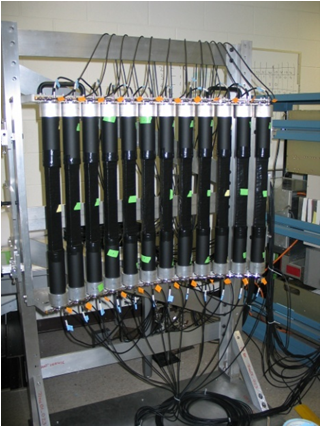A wide variety of charge-exchange reactions can be used to study the properties of nuclei and the choice of the probe for a particular experiment depends on several factors. Different probes have different sensitivities - for example the (7Li,7Be) reaction, in combination with gamma detection, allows for the isolation of events in which spin is transferred between the projectile and the target. All experiments carried out by the group are performed at about 100 MeV per nucleon, or above. At these relatively high beam energies, the reaction mechanism is relatively simple. An important consequence is that information about weak transition strengths can be extracted because of a proportionality between the measured charge-exchange reaction cross sections (chance of a certain transition taking place) and those strength (see left).
Although most experiments by the group are performed at NSCL, we also take data and participate in experiments at other facilities, such as the Research Center for Nuclear Physics in Osaka, Japan and the RI Beam Factory in Saitama, Japan. In addition, we collaborate with researchers from a wide variety of institutions in and outside of the US on experiments, but also on the development of theoretical tools.









